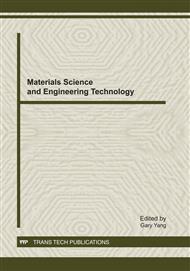p.89
p.94
p.103
p.108
p.114
p.121
p.127
p.133
p.137
Numerical Analysis of a Crack Emanating from Semicircular Notch with Connection to a Pre-Existing Crack
Abstract:
The real structures are of complex geometrical forms containing numerous zones of stress concentrations. These sites are characterized by weak sections due to the presence of notches which are the main causes of cracks initiation. The knowledge of the distribution of the stress field in the neighborhood of a notch is of an extreme importance for the analysis of the variation of the stress concentration factor with respect to the geometry of the notch. In this paper, the finite element method is used to study the effect of the existence of a microcrack on the behaviour of a notched structure. Then the behaviour of a crack emanating from the notch with the presence of the pre-existing crack is also investigated. It requires estimating the stress intensity factor at the crack tip, the length of the crack, the notch diameter and the angle between its bisecting line and the crack direction.
Info:
Periodical:
Pages:
114-120
Citation:
Online since:
January 2012
Authors:
Price:
Сopyright:
© 2012 Trans Tech Publications Ltd. All Rights Reserved
Share:
Citation:


